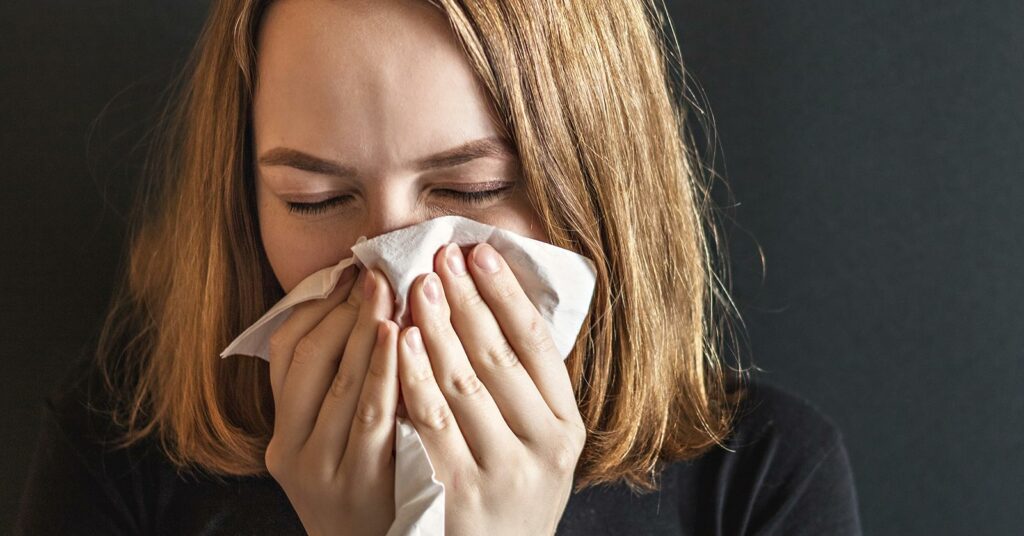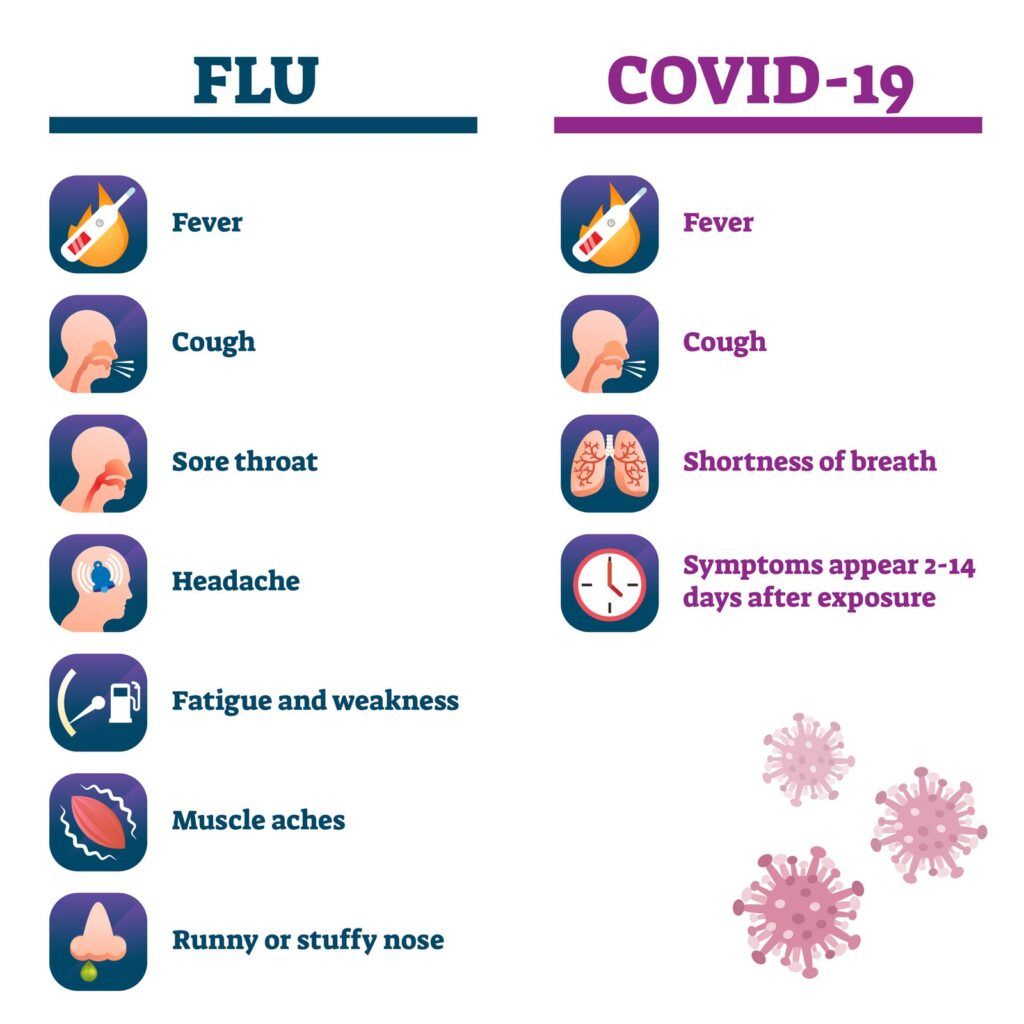
Since December 2019, every time you feel slightly under the weather, the worry over if you have COVID-19 rises. It can be hard to tell the difference between the symptoms of the coronavirus and flu; however, there are certain key differences between flu and COVID-19.
The Facts
Both COVID-19 and influenza (flu) are contagious respiratory infections, but they are caused by different viruses. Many symptoms of the two are the same, which can create confusion on which one you may be suffering from. (Healthline, 2020)
The Centers for Disease Control and Prevention reports COVID-19 seems to spread more easily and can cause more serious illnesses in some people. Ultimately, testing may need to be done to determine which, if any, virus you have. (CDC, 2020)
Symptoms – COVID-19 and Flu
COVID-19 and flu can range from no symptoms (asymptomatic) to severe symptoms, which are as follows:
- Fever or chills
- Cough
- Shortness of breath or difficulty breathing
- Fatigue
- Sore throat
- Congestion or running nose
- Muscle or body aches
- Headache
- Vomiting or diarrhea (more common in children)
How are they Different?

Incubation Time
Incubation is a time that passes between the initial infection and the onset of symptoms.
- COVID-19 The incubation period ranges between 2 and 12 days. According to the Centers for Disease Control and Prevention (CDC), the median incubation period is estimated to be 4 to 5 days.
- Flu The incubation period for the flu is shorter, averaging about 2 days and ranging between 1 and 5 days.
Can the Flu Turn Into COVID-19?
No. The flu cannot turn into COVID-19. And COVID-19 cannot turn into the flu because, these two illnesses are caused by different viruses.
Is it Possible to Have COVID-19 and the Flu Simultaneously?
Yes, it is possible to be infected with the flu and COVID-19 at the same time.
How These Viruses Spread
- Usually both the flu and COVID-19 spread in similar ways. Droplets or smallest virus particles from a sick person can transmit the virus to other people. The small particles may linger in the air, and any other person can inhale them and become infected easily.
- People can touch a surface with viruses on it, and then transfer the germs to themselves by touching their face or any facial parts.
- People infected with the COVID-19 or the flu may not realize that they are sick for several days, and during that time can unknowingly spread the disease to others before they eventually get sick. (WHO, 2020)
Treatment
- Neither the flu nor COVID-19 is treatable with antibiotics, because antibiotics only work on bacterial infections.
- Both are treated by addressing symptoms, such as reducing fever. Severe cases may require hospitalization and very ill patients may need a ventilator, especially those with COVID-19.
- Antiviral medications can help reduce the duration of both illnesses. (Mayo Clinic, 2020)
Prevention & Protection
Both the flue and COVID-19 can be prevented by mask-wearing, frequent and thorough hand washing, coughing into the edge of your elbow, staying home when sick and limiting contact when you feel uneasy. Physical distancing limits the spread of COVID-19 in communities. (Time, 2020)
The 3 F’s – Protect Against the Flu and COVID-19
- Flu shot. The COVID-19 vaccine may still be taking some time to be ready for everyone, but the flu vaccine is widely available. The flu shot is easily available in most pharmacies and health clinics.
- Follow safety precautions. Fortunately, the preventive measures for COVID-19 also apply for the flu.
- Focus on your immune system. Caring for your immune system is highly important to fighting off infections, especially viruses. The CDC recommends “Everyone should stay as healthy as possible. Eating a balanced healthy diet, exercising regularly, and getting enough sleep will help boost your immune system.”
(CDC, 2020)
Work Cited
“Similarities and Differences between Flu and COVID-19.” Centers for Disease Control and Prevention, Centers for Disease Control and Prevention, 29 Dec. 2020, www.cdc.gov/flu/symptoms/flu-vs-covid19.htm.
Seladi-Schulman, Jill. Coronavirus vs. Flu: Symptom Differences, More. 26 Mar. 2020, www.healthline.com/health/coronavirus-vs-flu#why-treated-differently
“Coronavirus Disease (COVID-19): Similarities and Differences with Influenza.” World Health Organization, World Health Organization, www.who.int/news-room/q-a-detail/coronavirus-disease-covid-19-similarities-and-differences-with-influenza
“COVID-19 (Coronavirus) vs. Flu: What’s the Difference?” Mayo Clinic, Mayo Foundation for Medical Education and Research, 22 Dec. 2020, www.mayoclinic.org/diseases-conditions/coronavirus/in-depth/coronavirus-vs-flu/art-20490339
Watson, Stephanie. “Is It a Cold, the Flu, Allergies, or COVID-19?” WebMD, WebMD, 2 Nov. 2020, www.webmd.com/lung/news/20201102/is-it-a-cold-the-flu-allergies-or-covid-19
Law, Tara. “COVID-19 Coronavirus vs. Flu: What’s the Difference?” Time, Time, 17 Dec. 2020, time.com/5921914/covid-19-vs-flu/
















